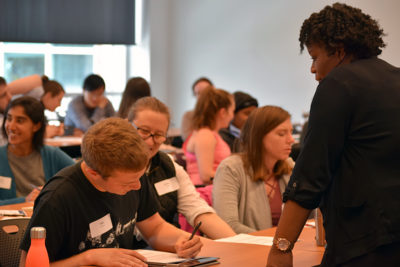Engaging the Public via Social Media

Gemima Philippe, Communications Associate for the American Association for the Advancement of Science (AAAS), provided great advice about what to think about during these three aspects of social media use when she spoke at the Pathways to Success Symposium on June 6th.
The most important of these is planning. Sometimes people just want to get started, and dive straight into implementation. Far too often, that ends up being inefficient, ineffective, or problematic. The more you plan, the better off you will be.
Before you do anything, write down your goals. What do you want to accomplish by using social media? What do you want your audience to do? And, how can you integrate social media into the other aspects of your communications work?
Second, identify who your audiences are. Get to know them through research. Part of that is looking at research on their use of social media. Then match up the social media platform most often used and trusted by your intended audience.
As you think about your communication message, decide on what identity you want to portray through social media. Should you keep your personal and professional identities separate? How will you establish and maintain credibility? What is the right balance of using jargon that will be understood by some target groups, and more description of concepts to be more inclusive to broader audiences?
After you start using social media, pay attention to analytics to find out what kind of an impact you are really having.
The biggest take home message from Gemima Philippe was that we might be able to get away with doing or saying whatever we want when we are communicating to our closest friends and family members on social media. When we want to use it in a more professional setting or for a particular purpose, planning becomes the most important aspect. Her message reminded me of a phrase told to me by one of my mentors: “if you aim at nothing, you will hit it.”
Social media use has many possible beneficial outcomes. Achieving any of those requires some careful thought.
This spotlight, written by a doctoral participant, is from the time period of the NIH grant (Sept. 2013- Jun. 2019) to the Cornell BEST Program now housed in the Graduate School as a university-wide initiative “Careers Beyond Academia” to encompass all disciplines.


